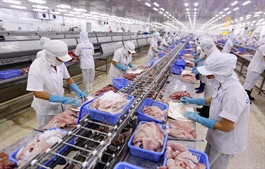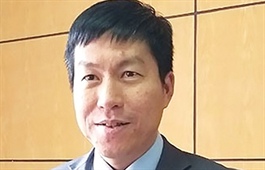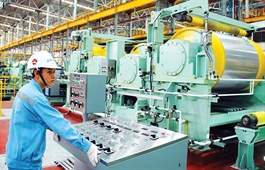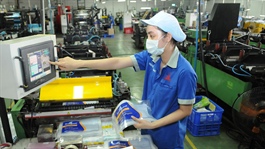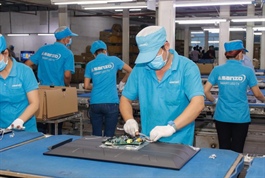Promoting the capability of Vietnamese suppliers
Promoting the capability of Vietnamese suppliers
A series of development cooperation activities are being implemented by Samsung in Vietnam on the basis of stability and safety amid the ongoing coronavirus pandemic. Kim Dong Hwan, vice president of Samsung Vietnam, in charge of Vietnam Procurement Center, spoke to VIR’s Hai Van about the priority of new technology and Vietnam’s potential for further investment.
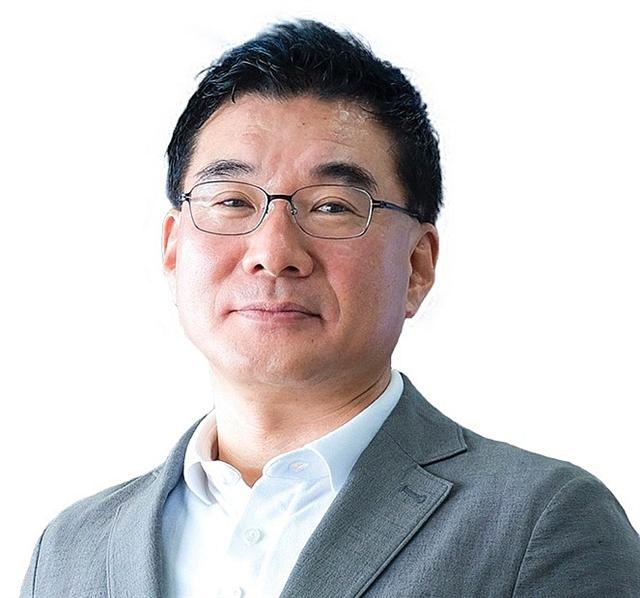
Kim Dong Hwan, vice president of Samsung Vietnam, in charge of Vietnam Procurement Center
|
How does Samsung evaluate the capability of Vietnamese suppliers?
With the strategy of co-development, Samsung Vietnam considers the competitiveness of partner enterprises as its strength. Therefore, we distinguish in neither nationality nor geographic location, and endeavour in the process of searching for suppliers.
We have achieved some remarkable results already, however, the basic foundations of Vietnamese businesses are not strong enough and the large-scale investment in modern equipment and high-tech manpower is still limited.
Lots of businesses around the globe are prioritising and investing in the development of new technologies. Based on Industry 4.0 and smart factories, these companies apply new automated-production methods; something that Vietnamese businesses could consult on and learn from.
With the strength of rich human resources and competitive production costs, plus the effort and cooperation between the government and enterprises, achievements in the development of exclusive technology are bound to happen.
In addition, the government also needs to have medium- and long-term master plans to develop incentive policies in parallel with boldly promote the signing of technology cooperation and mergers and acquisitions activities between Vietnamese enterprises and global tech companies, creating a driving force for industrial development.
Samsung set a target to promote the development of local vendors to increase localisation rate. How has the performance been so far?
With its commitment to co-prosperity with Vietnam, Samsung not only strengthens the capabilities of the businesses in its supply chain, but we also support the overall development of supporting industries in Vietnam.
Specifically, Samsung has been continuously implementing several practical activities.
First, it has held supporting industry exhibition seminars annually with the support of the Ministry of Industry and Trade (MoIT) and various authorities and associations to find and connect local businesses to Samsung’s global supply chains.
Second, Samsung has organised quality and production improvement consultancy programmes for businesses directly guided by South Korean experts since 2015.
Participants are potential Vietnamese enterprises, not necessarily just enterprises in the supply chain of Samsung. By the end of 2019, we have consulted and trained 142 enterprises and achieved many good results such as average productivity increasing by 30 per cent, and even in some enterprises by up to 90 per cent.
In addition, in 2018 and 2019, Samsung Vietnam cooperated with the MoIT to train 207 Vietnamese consultants for the supporting industry’s enterprises. We aim to train about 200 experts in the field of mould manufacturing by 2023.
What are the reasons for expanding cooperation into the field of moulds?
Mould engineering is being seen as a core industry and the foundation of manufacturing. Vietnam has started focusing on this area as well as being aware of the importance of developing and fostering professionals.
Improving mould engineering capacity is equivalent to possessing an advanced production technique that will play a major role in contributing to industrial production in Vietnam.
When local enterprises have built up a solid foundation with outstanding mould technology, they will be able to not only actively participate in the supply chain of Samsung in many fields but also join other global enterprises.
How do you evaluate the status of the mould industry in Vietnam?
The value of the industry in Vietnam is currently estimated at $1 billion a year with a growth rate of 18 per cent. Vietnamese firms have produced tier 3 and 4 products out of the 5-tiers of technological competency.
Tier 1 and 2 products are still imported from large corporations.
A survey conducted by Samsung Vietnam and the MoIT shows that there is a lack of professional mould engineers. That is why Samsung is training those mould experts.
Can Vietnam maintain its status as an attractive and effective investment destination for Samsung?
For Samsung, Vietnam has actually become a second home for the group. After 12 years, Samsung is currently the largest foreign investor in Vietnam with the total investment capital of over $17.3 billion. Up to now, Samsung’s presence in Vietnam includes six factories and one research and development (R&D) centre, of which SEV in Bac Ninh and SEVT in Thai Nguyen are the two largest mobile phone factories for Samsung globally. SEHC in Ho Chi Minh City meanwhile is the largest home electronics factory and SVMC is Samsung’s largest R&D Center in Southeast Asia.
Currently, Samsung is building a new R&D centre near West Lake in Hanoi, with an investment of about $220 million and a floor area of nearly 80,000 square metres. It is expected to be completed by the end of 2022 and will increase the workforce from the current 2,200 people to 3,000 people.
Along with, Samsung has now created stable jobs for 130,000 local workers.







